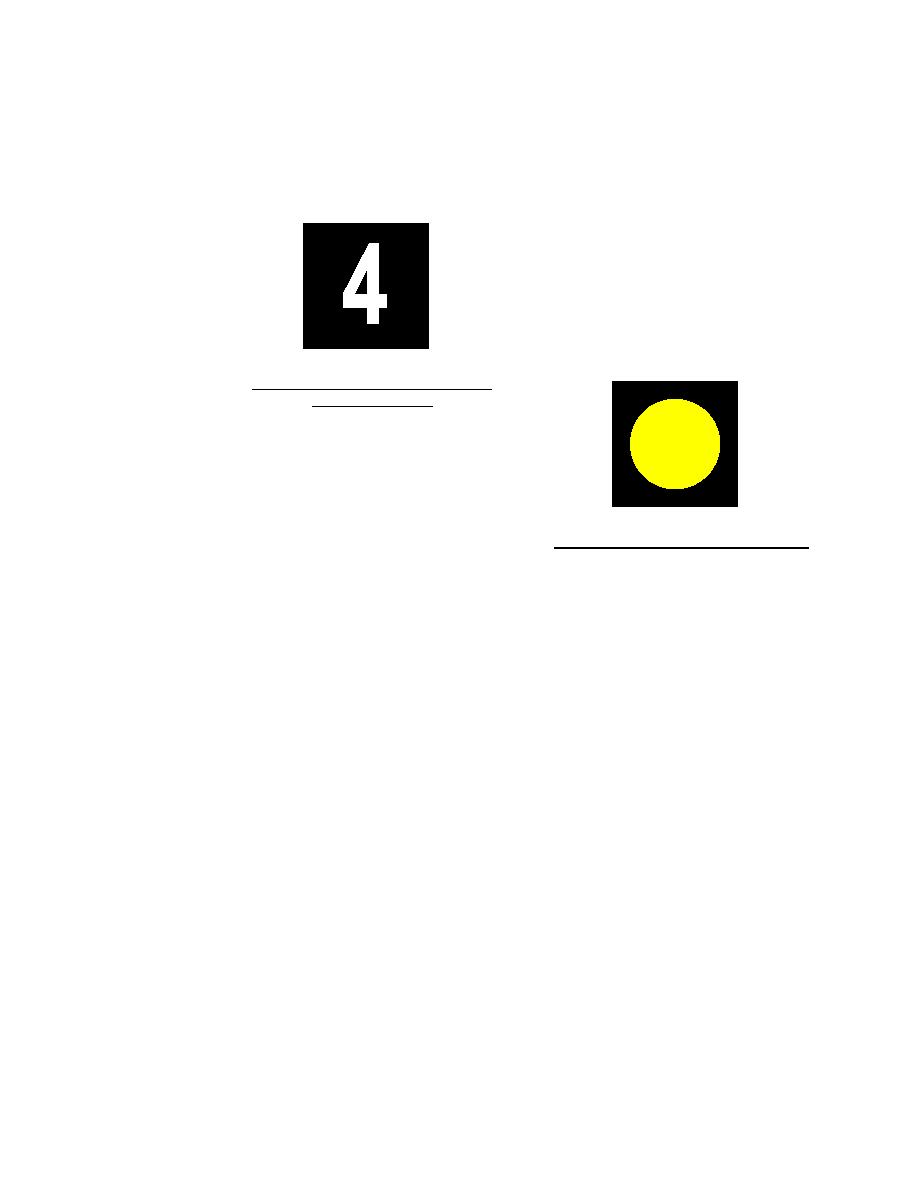
UFC 3-535-01
17 November 2005
9-6.2
Installation
An RDM system is required for a runway on which jet aircraft operations are conducted.
They are recommended for runways where only propeller-type aircraft operations are
conducted.
Figure 9-7. Typical RDM and AGM (Markers)
RUNWAY DISTANCE REMAINING
MARKER (RDM)
NOTE: RDM ARE FAA TYPE L-858B, WITH
WHITE LEGEND ON BLACK BACKGROUND,
MEETING FAA AC 150/5345-44, SIZE 4, STYLE 2 OR 3.
ARRESTING GEAR MARKER (AGM)
AGM HAVE CHARACTERISTICS OF RDM, BUT
WITH A YELLOW CIRCLE 1M (39") IN DIA. ON
BLACK BACKGROUND.
9-6.2.1
The row of markers along each side of the runway is parallel to the runway
centerline, and equal distance from the runway edge. FAA Size 4 RDM are positioned
15-22.5 meters (50-75 feet) from the runway edge. Use only FAA Size 4 RDMs.
9-6.2.2
RDM are spaced at 300 meter (1,000 foot) intervals along the runway,
excluding the threshold and runway end. Displaced threshold areas that are used for
takeoffs and/or rollout are treated as part of the runway for purposes of locating the
markers. Numerals are shown on both faces of the markers so the distance remaining
can be seen in either direction of operations.
9-6.2.3
For runway lengths that are not an exact multiple of 300 meters (1,000
feet), one-half the excess distance is added to the distance of each marker for each
runway end. For example, for a runway length of 6,500 feet, the excess distance is 500
feet and the location of the last marker on each runway end is 1,000 feet plus one-half
of 500 feet, or 1,250 feet. A longitudinal tolerance of 15 meters (50 feet) is allowed if
a marker cannot be installed at its standard location. A marker should be omitted if it
cannot be installed within this tolerance. This standard procedure for siting RDM is
illustrated by Figure 9-8. Alternative methods can be found in FAA 150/5340-18, as
allowed by the appropriate command.
141


 Previous Page
Previous Page
